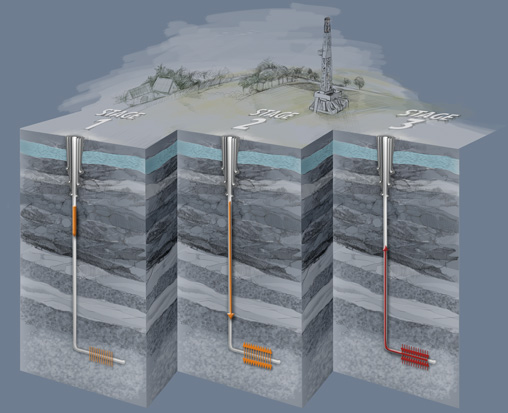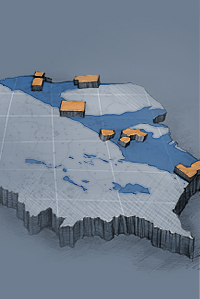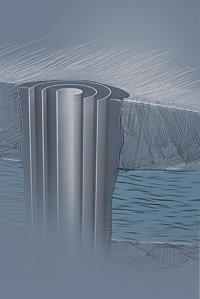Shale gas production
The potential offered by unconventional gas has driven the development of new hydrocarbon production techniques. The most important achievements in this area have been horizontal drilling, commercialised in the 1990’s, and hydraulic fracturing, used in gas production since 2003.

The first stage in the shale gas production process is to drill a vertical borehole, usually a few kilometres deep. After drilling through impervious rocks and reaching sandstone layers, the borehole must be secured with double insulation (casing and cement barrier) to prevent fluid migration between the well and surrounding rock. Drilling a horizontal tunnel is the next stage in the process. Thus the production zone is expanded, which is necessary as gas in shales, unlike gas in conventional reservoirs, is usually dispersed. Next in the process comes fracturing, an operation which consists in enlarging the natural fractures in the rock.
During fracturing, hydraulic fluid is pumped down into the wellbore under extremely high pressure, which causes the fractures in the rock to break and releases the trapped gas. The fracturing mixture is mainly water (95%), sand (4.5%) and chemicals (0.5%) whose function is to reduce friction, prevent corrosion and eliminate bacteria.
The mixture, pumped in under high pressure, enters the fractures in the rock to make them crack. Sand in the fluid prevents the fractures from contracting, thus creating a fairway through which gases can flow to the well.
To ensure safety, the whole process is monitored on an ongoing basis. Special probes are fitted in an observation borehole or installed on the surface. Cracking rocks send a signal which is processed by the probes and transmitted to a computer for analysis by the engineering crew. This ensures ongoing supervision of the fracturing process.




